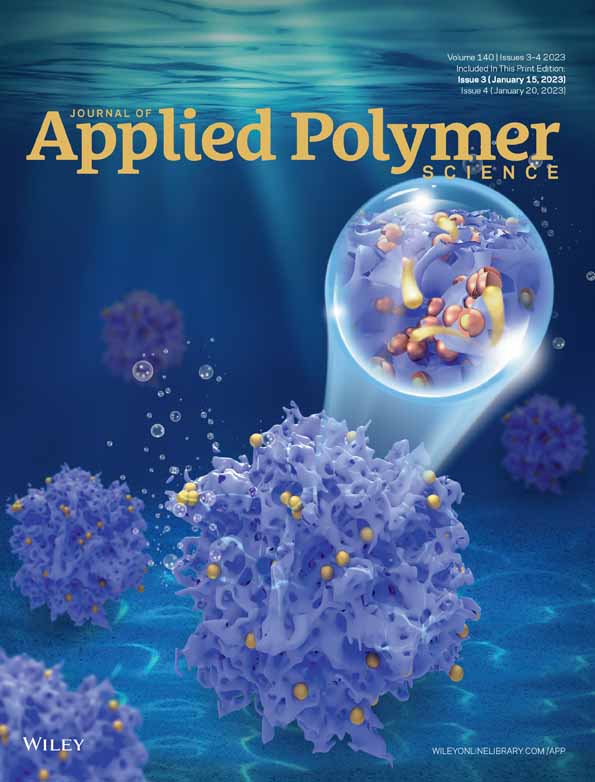Studies on the reactivity of epoxy/polyol/isocyanate blend resins and the properties of epoxy/polyurethane composites
Funding information: Ministry of Science and Technology, Grant/Award Number: NSC 104-2313-B-005-029-MY3
Abstract
Epoxy resin (ER) is one of the most widely used synthetic resins, and the improvement of its toughness is an important issue. In this study, Epon 828 is used as ER resin, polytetramethylene ether glycol (PTMG) and liquefied wood (LW) are used as polyol, and IPDI, H12-MDI, Desmodur N, and Desmodur L are used as isocyanate. The influence of polyurethane resin (PU) composition on the reactivity of ER/polyol/isocyanate blended resin and the properties of ER/PU composite are investigated. The results show that the mixture of ER/PTMG/IPDI has greater reactivity, followed by ER/PTMG/Desmodur N, while ER/PTMG/Desmodur L has lower reactivity. In the structure of ER/PU blended resin composites, ER and PU resins not only form a physical interpenetrating structure, but also undergo a copolymerization crosslinking reaction. The modulus of elasticity of ER/PU composites prepared with trifunctional Desmodur L and Desmodur N is greater than that of bifunctional IPDI and H12-MDI, while those with LW as polyol is greater than that of PTMG as the raw material.
Open Research
DATA AVAILABILITY STATEMENT
The data that support the findings of this study are available from the corresponding author upon reasonable request.




